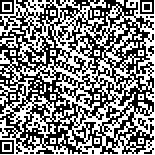| 卢大松,冯勇军,王武峰,等.老年营养风险指数对鼻咽癌患者放疗敏感性和预后的预测价值[J].肿瘤学杂志,2023,29(10):853-859. |
| 老年营养风险指数对鼻咽癌患者放疗敏感性和预后的预测价值 |
| Predictive Value of Geriatric Nutritional Risk Index for Radiotherapy Sensitivity and Prognosis of Patients with Nasopharyngeal Carcinoma |
| 投稿时间:2023-04-13 |
| DOI:10.11735/j.issn.1671-170X.2023.10.B008 |
|
 |
| 中文关键词: 老年营养风险指数 鼻咽肿瘤 放疗敏感性 预后 |
| 英文关键词:geriatric nutritional risk index nasopharyngeal carcinoma radiotherapy sensitivity prognosis |
| 基金项目:海南省卫生健康行业科研项目(20A200337) |
|
| 摘要点击次数: 634 |
| 全文下载次数: 321 |
| 中文摘要: |
| 摘 要:[目的] 评估老年营养风险指数(geriatric nutritional risk index,GNRI)对鼻咽癌患者放疗敏感性和生存预后的预测价值。[方法] 选取2018年1月至2021年1月在海南医学院第二附属医院接受放疗的122例鼻咽癌患者为研究对象,分别于放疗前1周(放疗前)、放疗第4周(放疗中)和放疗结束计算患者GNRI,根据放疗反应将鼻咽癌患者分为放疗敏感组和放疗抵抗组,应用重复测量方差分析比较两组患者放疗期间GNRI的变化和差异。采用受试者工作特征(receiver operating characteristic,ROC)曲线分析GNRI预测鼻咽癌患者放疗敏感性的效能。同时根据GNRI计算结果将鼻咽癌患者分为营养正常组和营养不良组,应用Kaplan-Meier法和Log-rank检验分析两组患者4年总生存率(overall survival,OS)和无远处转移生存率(distant metastasis free survival,DMFS)差异。[结果] 鼻咽癌患者放疗期间GNRI进行性降低(F=78.797,P<0.001),放疗抵抗患者GNRI降低幅度更大,放疗期间放疗抵抗患者GNRI低于放疗敏感患者(F=17.538 ,P<0.001),营养不良发生率高于放疗敏感患者(P<0.05)。ROC曲线分析结果显示,放疗中、放疗结束GNRI预测鼻咽癌患者放疗敏感性的曲线下面积分别为0.781和0.886,特异度分别为72.8%和81.5%,灵敏度分别为70.7%和85.4%。生存分析显示放疗前、放疗中、放疗结束营养正常患者和营养不良患者的4年OS分别为81.2% vs 35.4%、83.3% vs 51.0%、100.0% vs 52.5%,4年DMFS分别为75.5% vs 26.9%,82.4% vs 44.4%,100.0% vs 47.0%,两组间OS和DMFS比较差异均有统计学意义(P<0.05)。[结论] 鼻咽癌患者放疗期间营养状况进行性恶化,GNRI是鼻咽癌患者放疗敏感性和生存预后的一个可靠预测指标,可指导临床治疗方案的选择。 |
| 英文摘要: |
| Abstract: [Objective] To evaluate the application of geriatric nutritional risk index(GNRI) in prediction of radiotherapy sensitivity and prognosis of patients with nasopharyngeal carcinoma(NPC). [Methods] A total of 122 patients with NPC treated in The Second Affiliated Hospital of Hainan Medical College from January 2018 to January 2021 were enrolled. GNRI of patients was calculated at 1 week before radiotherapy(pre-radiotherapy), 4 weeks after radiotherapy(mid-radiotherapy) and end-radiotherapy. NPC patients were divided into radiosensitive group and radioresistant group according to radiotherapy response, and the GNRI changes and differences between the two groups during radiotherapy were compared by repeated measure analysis of variance. Receiver operating characteristic(ROC) curve was used to evaluate the efficacy of GNRI in predicting radiotherapy sensitivity in NPC patients. At the same time, NPC patients were divided into normal nutrition group and malnutrition group according to the results of GNRI calculation, and the 4-year overall survival(OS), distant metastasis free survival(DMFS) of the two groups were analyzed by Kaplan-Meier and Log-rank tests. [Results] During radiotherapy, the GNRI of patients with NPC decreased progressively(F=78.797, P<0.001), and the GNRI of radioresistant patients decreased more significantly. The GNRI of radioresistant patients was lower than that of radiosensitive patients(F=17.538, P<0.001), and the incidence of malnutrition was higher than that of radiosensitive patients(P<0.05). ROC curve analysis showed that the area under the curve(AUC) of GNRI in predicting radiotherapy sensitivity in mid-radiotherapy and end-radiotherapy was 0.781 and 0.886, the specificity was 72.8% and 81.5%, and the sensitivity was 70.7% and 85.4%, respectively. Survival analysis showed that 4-year OS in patients with normal nutrition and malnutrition in pre-radiotherapy, mid-radiotherapy and end-radiotherapy were 81.2% vs 35.4%, 83.3% vs 51.0% and 100.0% vs 52.5%, respectively, and the DMFS were 75.5% vs 26.9%, 82.4% vs 44.4% and 100.0% vs 47.0%, respectively, there were statistically significant differences between the two groups(P<0.05). [Conclusion] Nutritional status of NPC patients deteriorates progressively during radiotherapy. GNRI may be used as a predictor of radiotherapy sensitivity and survival prognosis to guide the clinical treatment for NPC patients. |
|
在线阅读
查看全文 查看/发表评论 下载PDF阅读器 |